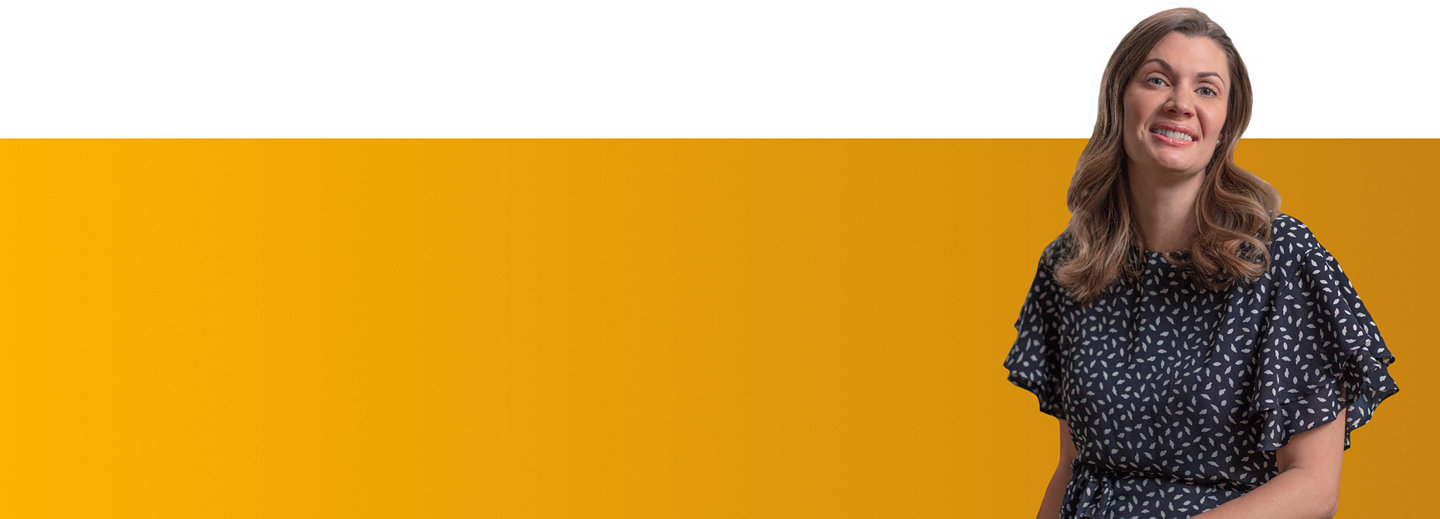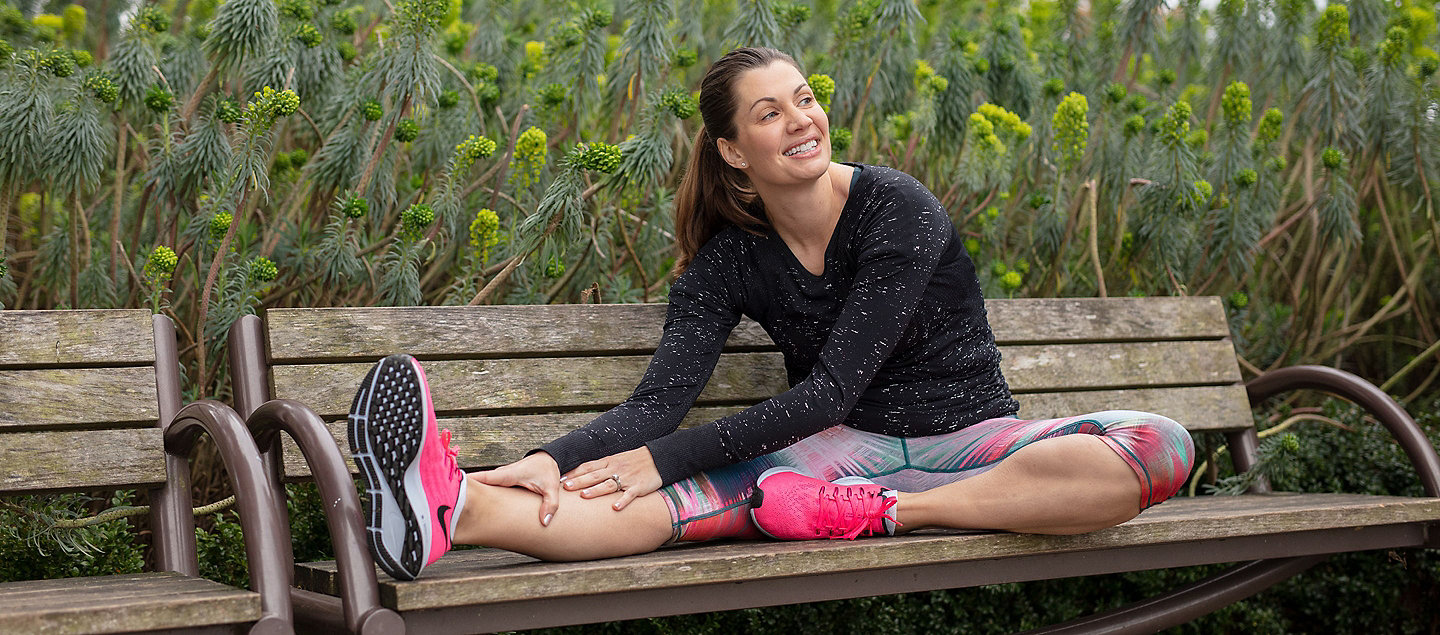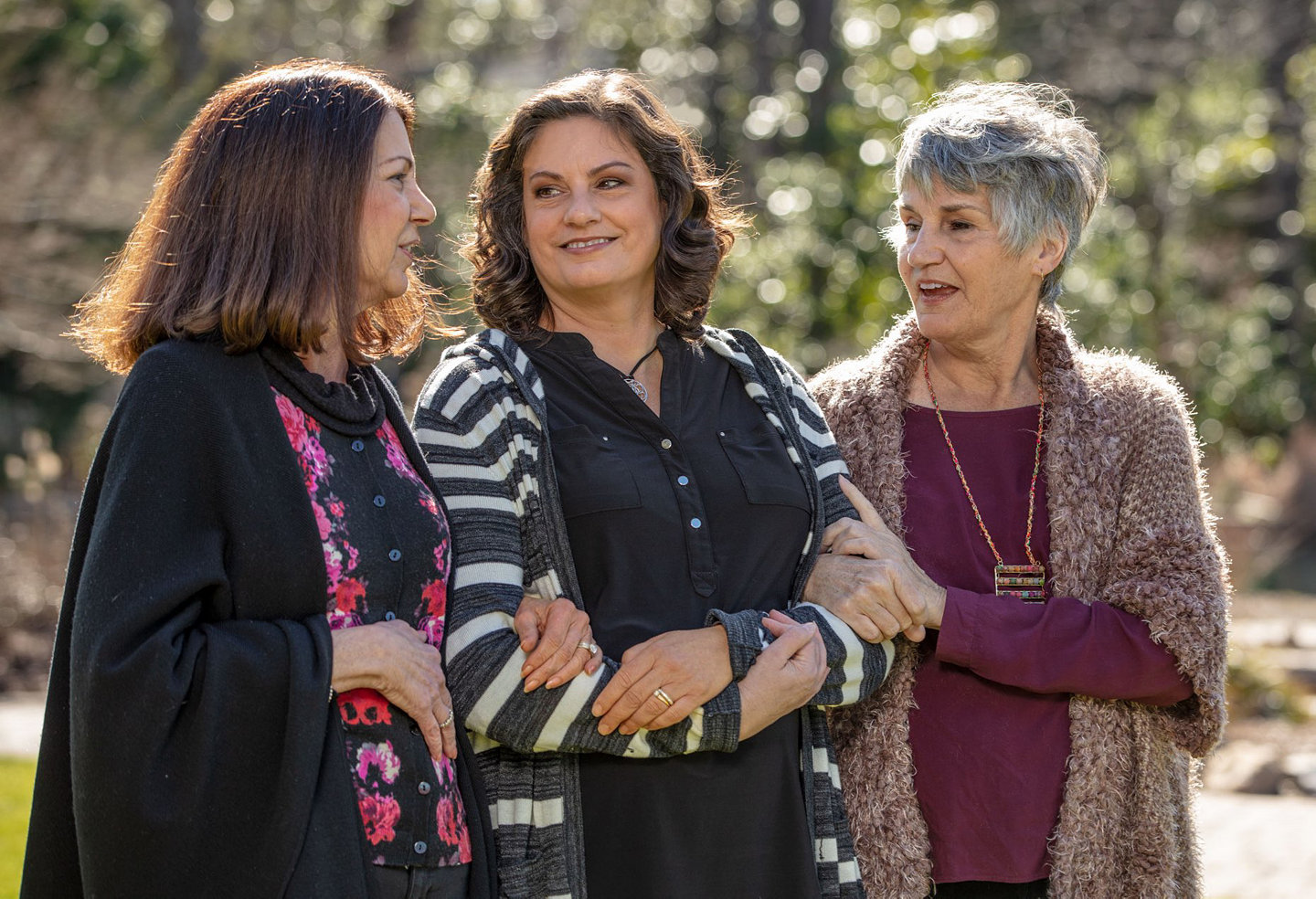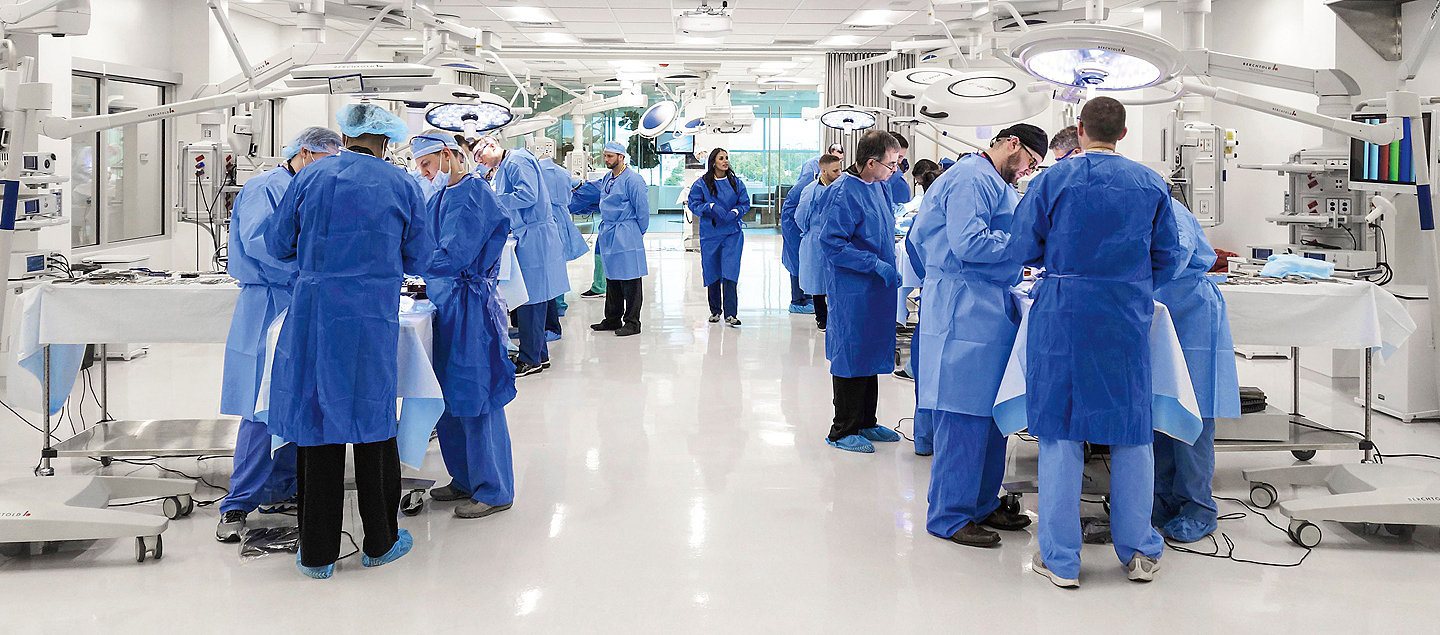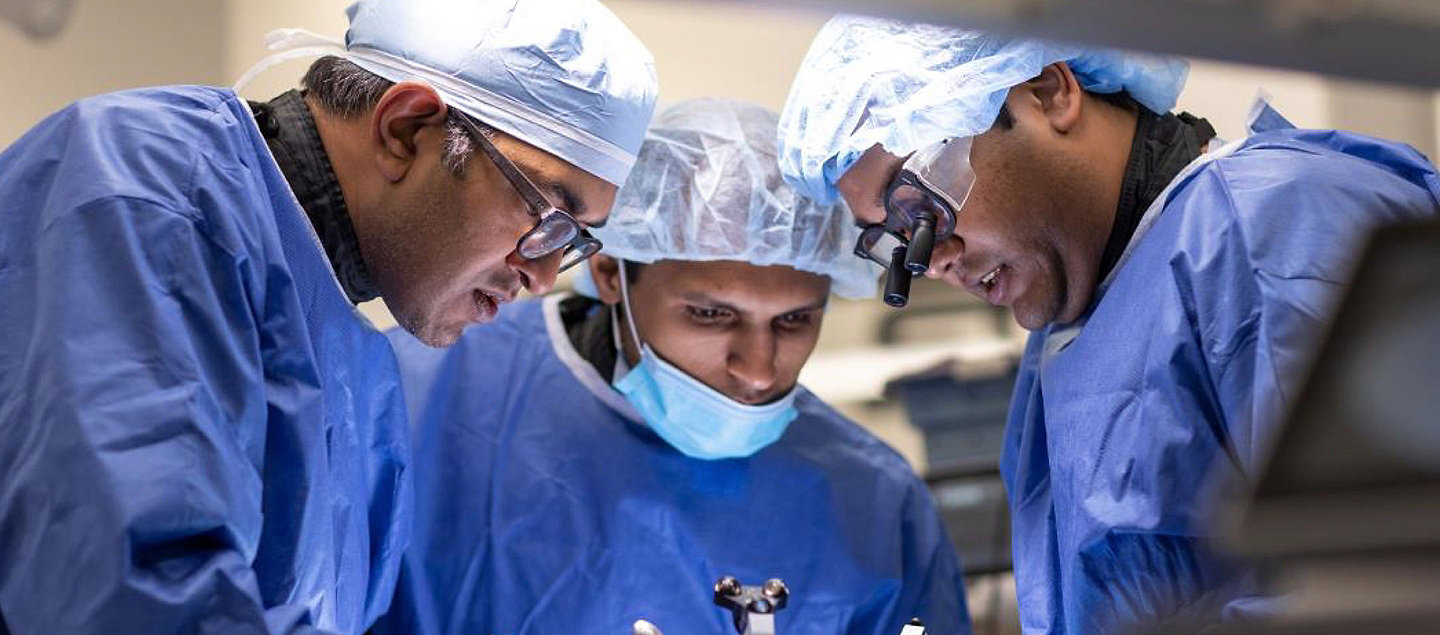Stryker’s technology improves outcomes for patient and physician
On the day oncoplastic surgeon Dr. Anne Peled was getting ready to perform a double mastectomy and breast reconstruction, her phone rang. She wasn’t thinking about her own health, but the news was grim — the disease she spent her life treating had found her.
“I was so shocked,” says Dr. Peled, a 38-year-old vegetarian triathlete who suspected the lump she discovered, and had biopsied, was just a cyst. “There were no words, even though I tell women about breast cancer diagnoses many times a week. I had to remind myself what I tell my patients — that this is very treatable and, in many cases, curable.”
With her knowledge and experience, she was able to put together “an amazing team of caring and talented clinicians who really listened to me and what I wanted,” including her parents, who are radiation oncologists, and sister, a medical oncologist. “I felt incredibly grateful for the care and support I received, and I got through my treatment smoothly and relatively easily” — thanks, in part, to the type of hidden scar surgery she performs on her own patients.
“Patients look as good, if not better than before, so they can more easily move past treatment.”
— Dr. Anne Peled
Getting back to feeling whole
During surgery, big scars can appear at the cancer site, many times in highly visible locations. While some women may see their scars as an empowering symbol, many do not. Research shows that breast surgery scars may impact a woman’s psychological and emotional well-being, as well as quality of life after surgery.1
This is where Stryker comes in with a growing women’s health and breast cancer portfolio. Case in point: Stryker’s illuminated instruments for hidden scar surgery, which can be used for everything from skin sparing mastectomies to breast-conserving procedures (lumpectomy) to total reconstruction.
With the help of this technology, breast and plastic surgeons can minimize scarring with access and visualization to achieve optimal surgical and aesthetic outcomes, which help women move forward feeling more whole and empowered — and without seeing reminders of the cancer every day.
“Stryker’s illuminated instrument technology makes a huge difference in performing hidden scar techniques,” says Dr. Peled. “I believe it’s safer and more efficient than other products on the market, with superior design and quality. And patients look as good, if not better, than before, so they can more easily move past treatment.”
“This technology provides surgeons access and visualization during surgery to achieve optimal surgical and aesthetic outcomes, including minimally invasive surgeries,” says Charles Henkel, Stryker Sales Manager, Surgical Technologies.
“I had to remind myself what I tell my patients —
that this is very treatable and, in many cases, curable.”
— Dr. Anne Peled
Moving on with life and career
As an advocate of hidden scar surgery — as well as a new procedure she developed with her husband, plastic surgeon Ziv Peled, to preserve nerve sensation in the breast — Dr. Peled travels the country to train colleagues in the surgical technique she experienced as a patient. She also talks about the technique on social media and invites surgeons to come to her practice to watch and learn.
Dr. Peled has found that sharing her story can be especially helpful for her younger patients, because the fears, challenges and decision-making around breast cancer can be very different than for older women, and peer support can be even more important.
“I can share ‘insider tips’ on getting through the care,” she explains. “Many patients who know about my own diagnosis will reach out to ask questions about my experience as they go through their treatment, and I love the way this connects me to them in a totally different way.”
With colleagues, Dr. Peled has learned to carefully draw from her personal experience to make productive, patient-focused suggestions, which she believes may carry some weight.
“As I settle into these dual and simultaneous roles of breast cancer surgeon and breast cancer survivor, I’m gradually balancing the interplay of these parts of myself into my relationships with both patients and colleagues,” she says. “For now, I take it one interaction at a time and bask in the deeply connecting moments of shared understanding when they happen.”
1. Gass J, et al. How do breast cancer surgery scars impact survivorship? Findings from a nationwide survey in the United States. BMC Cancer (2019) 19:342. https://doi.org/10.1186/s12885-019-5553-0. Accessed 10/2019.
SPY fluorescence: improving visualization in breast reconstruction
When two of her sisters had breast cancer, 51-year-old Barbara Pink, the baby of the family, was aware that she might be next, knowing that women with “first degree” relatives with breast cancer are at an increased risk.
Barbara learned about her diagnosis following a mammogram. “Because of my sisters, I wasn’t shocked,” Barbara says. “I was around the same age as they were when they were diagnosed.”
But with an aggressive form of breast cancer, Barbara made the decision to get a bilateral mastectomy and bilateral breast reconstruction, an increasingly common choice for many women. In fact, the number of breast cancer patients opting for implant reconstruction after a mastectomy has increased by two-thirds.1
Barbara’s plastic surgeon, Dr. Charles Kays, from Wilmington Plastic Surgery, in Wilmington, North Carolina, says the number of cases where the mastectomy and implant reconstruction are done at one time, rather than two separate surgeries, is also becoming more common. “There’s a lot of emotional trauma to having your breasts removed and not completing your reconstruction at the time of surgery. When we perform both at the same time, patients are relieved to get the procedure over with and their overall recovery is shorter,” he says.
Dr. Kays took advantage of Stryker’s innovative SPY fluorescence imaging technology during the complicated operation. With SPY fluorescence, surgical teams can better visualize anatomy and blood flow in vessels and related tissue, which may improve outcomes in the operating room.2
After the surgery, Barbara was up and around in just a few days and fully back in action after only four weeks. “I was thrilled and my sisters were thrilled,” says Barbara. “I had amazing care, and I’m just so happy to move ahead with my life.”
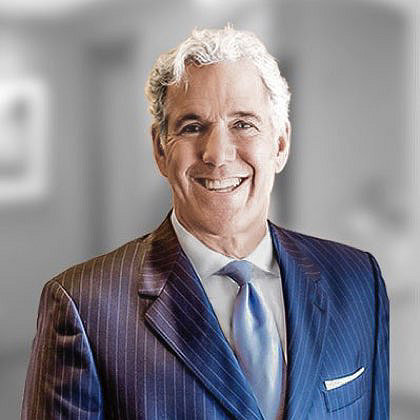
Charles R. Kays, MD
Plastic and Reconstructive Surgeon
Wilmington Plastic Surgery
1. U.S. Agency for Healthcare Research and Quality 2009.
2. SPY clinical bibliography available upon request.
2019 acquisitions: growth opportunities and market-leading innovations
With a disciplined approach, Stryker strategically acquires businesses and integrates them quickly to accelerate long-term growth opportunities in both existing and new segments of our industry. In 2019, we completed four acquisitions that will bring innovative and complementary products to our portfolio and strengthen our market leadership.

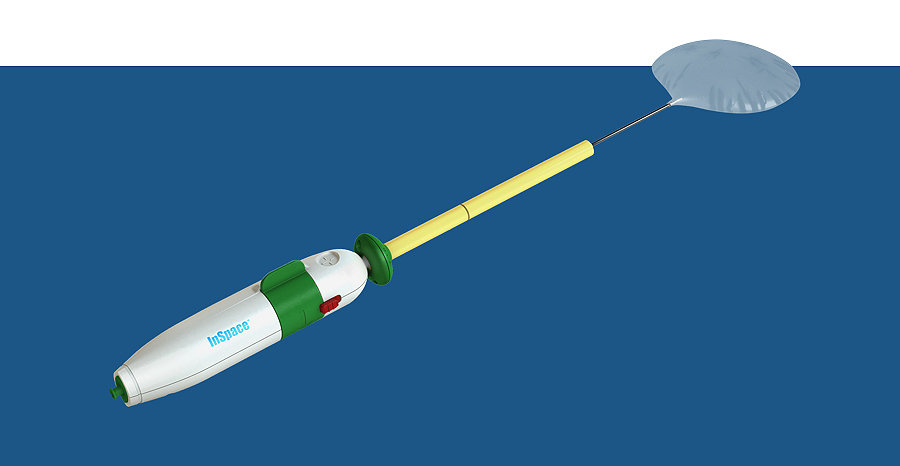
Arrinex
Based in Menlo Park, California, Arrinex developed ClariFix, a novel cryoablation technology for the treatment of chronic rhinitis. This condition, which affects more than 24 million people in the U.S. each year, may cause runny nose, congestion, sneezing and nasal itching. ClariFix complements and further expands Stryker’s Ear, Nose and Throat (ENT) portfolio with a unique product that meets the needs of a large, underpenetrated segment of the ENT market where we have not competed previously. As a result, ENT physicians have new technologies that deliver more treatment options and better patient outcomes.
OrthoSpace
With the acquisition of Israel-based OrthoSpace, we have added to our sports medicine portfolio a highly differentiated technology for the treatment of massive rotator cuff tears. Called InSpace, the product is a biodegradable sub-acromial spacer, which is designed to realign the natural biomechanics of the shoulder. InSpace has a clinical history of more than 20,000 patients being treated in 30 countries and provides our customers an innovative surgical option to address a complex pathology. The InSpace device is currently investigational and not approved for sale in the U.S. and limited by Federal law to clinical investigational use.
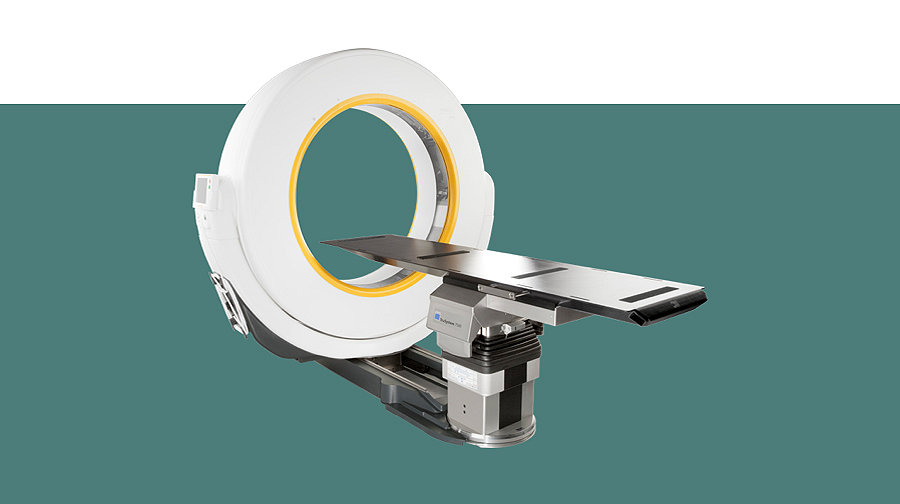
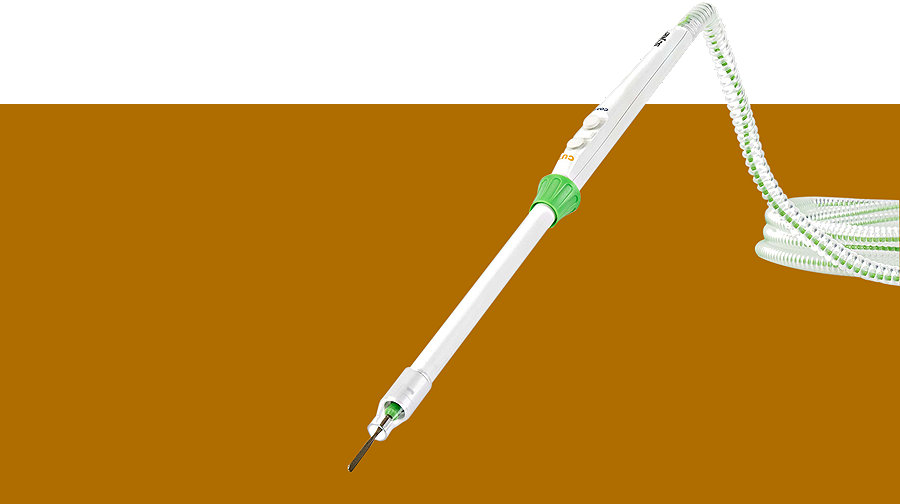
Mobius Imaging and Cardan Robotics
With expertise in advanced imaging and robotics, as well as a robust product pipeline, Mobius Imaging and Cardan Robotics will strengthen our presence in our key Orthopaedics, Spine and Neurotechnology markets. As a result, we are positioned to make healthcare better by providing more complete procedural solutions, including sales, service, and support, while helping surgeons achieve the best possible outcomes for their patients.
SafeAir
This Swiss medical device company designs, develops and manufactures innovative surgical smoke evacuation products that help reduce staff and patient exposure to hazards associated with surgical smoke. Highly complementary to our Surgical Technologies business, SafeAir products strengthen our existing smoke evacuation portfolio in both the U.S. and Europe and align with our goal of providing better care and a higher level of safety for both healthcare professionals and patients.
Mako expands reach in Asia Pacific
Thanks to its demonstrated accuracy and precision1–5 and a concerted marketing effort, Mako enjoyed significant growth in Asia Pacific in 2019. Two key reasons for this growth were the acceleration of China’s Mako Total Hip joint replacement business since it was introduced in 2018, and the 2019 launch of Mako Total Hip and Total Knee in Japan.
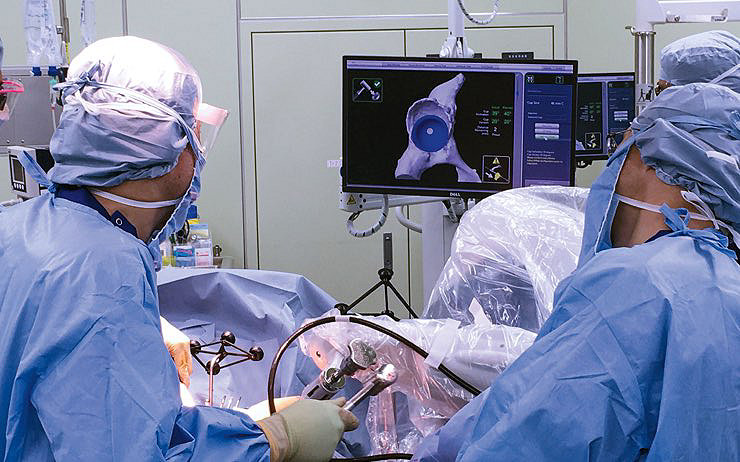
©Kobe Kaisei Hospital
“In my experience, Mako Total Hip has shown better outcomes after surgery compared to arthroplasty performed manually.1”
Dr. Nao Shibanuma,
Deputy Medical Director,
Kobe Kaisei Hospital
The first hospital to install Mako in Japan
In both of these large markets, Stryker emphasized clinical evidence, training and education, and media awareness to support this growth. “Because we have been helping surgeons to know more about a patient’s unique anatomy with Mako SmartRobotics™ CT-based planning, and accurately and precisely1–5 cut less6–10 with AccuStop™ haptic technology, healthcare professionals are welcoming Mako with open arms,” says Christopher Roger, Director, Robotics Sales and Support, Japan.
In both countries, the number of Mako systems and procedures has increased significantly. In Japan, for example, the growth opportunities are considerable. Approximately 60,000 total hip replacements and 82,000 total knee and partial knee replacements are performed annually,11 with the number expected to increase due to the aging population. Stryker has sponsored trainings and participated in surgical conferences and events in Asia Pacific to educate surgeons on the use of Mako technology.
A Mako media day in Japan, which focused on innovations in joint replacement surgeries, resulted in local and industry news stories that reached more than 30 million people.
1. Illgen R, Bukowski B, Abiola R, Anderson P, Chughtai M, Khlopas A, Mont M. Robotic-assisted total hip arthroplasty: Outcomes at minimum two year follow up. Surgical Technology International. 2017 July 25; 30:365-372.
2. Kayani B, Konan S, Tahmassebi J, Pietrzak JRT, Haddad FS. Robotic arm assisted total knee arthroplasty is associated with improved early functional recovery and reduced time to hospital discharge compared with conventional jig-based total knee arthroplasty: a prospective cohort study. The Bone and Joint Journal. 2018;100-B:930-7.
3. Kleeblad LJ, Borus T, Coon T, Dounchis J, Nguyen J, Pearle A. Midterm survivorship and patient satisfaction of robotic-arm assisted medial unicompartmental knee arthroplasty: a multicenter study. The Journal of Arthroplasty. 2018:1-8.
4. Anthony I, Bell SW, Blyth M, Jones B, et al. Improved accuracy of component positioning with robotic-assisted unicompartmental knee arthroplasty. J Bone Joint Surg Am. 2016;98-A(8):627-35.
5. Mahoney O, Kinsey T, Mont M, Hozack W, Orozco F, Chen A. Can computer generated 3D bone models improve the accuracy of total knee component placement compared to manual instrumentation: a prospective multicenter evaluation? International Society for Technology in Arthroplasty 32nd Annual Congress. Toronto, Canada. October 2-5, 2019.
6. Suarez-Ahedo C; Gui C; Martin T; Chandrasekaran S; Domb B. Robotic arm assisted total hip arthroplasty results in smaller acetabular cup size in relation to the femoral head size: A Matched-Pair Controlled Study. Hip Int. 2017; 27 (2): 147-152.
7. Haddad FS, et al. Iatrogenic Bone and Soft Tissue Trauma in Robotic-Arm Assisted Total Knee Arthroplasty Compared With Conventional Jig-Based Total Knee Arthroplasty: A Prospective Cohort Study and Validation of a New Classification System. J Arthroplasty. 2018 Aug;33(8):2496-2501. Epub 2018 Mar 27.
8. Hozack WJ. Multicentre analysis of outcomes after robotic-arm assisted total knee arthroplasty. Orthop Proc. 2018;100-B(SUPP_12):38.
9. Banks, Scott A, PhD. Haptic Robotics Enable a Systems Approach to Design of a Minimally Invasive Modular Knee Arthroplasty. Am J Orthop. 2009;38(2 suppl):23-27. February 2009.
10. Hampp E, Chang TC, Pearle A. Robotic partial knee arthroplasty demonstrated greater bone preservation compared to robotic total knee arthroplasty. Annual Orthopaedic Research Society. Austin, TX. 2-5 Feb 2019.
11. Japan Ministry of Health, Labour and Welfare. The 4th NDB Open Data Japan (Cases from Apr 2017 to Mar 2018). 2019.
Making healthcare better with medical education
Along with our commitment to delivering innovative and industry-leading technology, Stryker provides extensive medical education and training offerings for healthcare professionals. These offerings are designed to help advance product and procedural knowledge and skills, improve customer competence and confidence, and lead to better patient outcomes. Here are some highlights from across the company:
Craniomaxillofacial (CMF)
Our CMF medical education programs include national, regional and local courses for neurosurgeons and craniomaxillofacial surgeons who perform trauma, reconstructive and orthognathic (jaw) surgery. Many courses include a cadaveric component taught by surgeons who are leaders in their field, providing an elevated, hands-on experience for attendees. We also emphasize personalized medicine through education on the use of virtual surgical planning and other patient-specific surgical solutions that support improving patient outcomes. On-demand education is also offered online through our surgical video library.
Endoscopy
With our industry-leading SPY imaging technology, we established a training program to help drive the adoption of fluorescence as a standard of care. Our popular iSPIES program covers colorectal, uro-gynecological, pediatric cardiovascular and cardiothoracic procedures. From symposiums to clinical immersion, we offer customized education, including a fellows textbook program and courses, surgery observation programs and regional trainings so surgeons can avoid travel.
Joint Replacement
A wide variety of programs are available for joint replacement surgeons, including the highly attended Mako System Certification program. During this comprehensive hands-on program, surgeons must successfully complete two cadaveric joints with each Mako application in order to be certified to perform Mako procedures. Other in-demand educational offerings are our Virtual Surgical Demos and Observations live events, broadcasted to surgeons and OR staff, in which Mako robotic-arm assisted procedures are demonstrated. We also have surgical simulations on both the Mako Partial Knee and Mako Total Knee, which allow surgeons to practice intra-operative balancing at their own pace.
Neurosurgical
In our Stryker Training Center in Salt Lake City, Utah, neurosurgery residents can take the Neurotechnology National Course, drawing on the wisdom of world-renowned faculty members. 2019 marked the first annual cross-divisional program that covered our entire Neurotechnology portfolio, including Spine, Interventional Spine, Neurosurgical, CMF and Neurovascular. We also offer a hands-on National OR Professional Workshop for operating room directors, coordinators, RNs, scrub techs and sterile processing professionals. In 2019 our Mobile Lab, which simulates eight operating rooms, hosted 140 events across the country.
Neurovascular
Stroke Knowledge Initiatives for Learning and Leadership (SKILL) is a series of innovative, tailored ischemic and hemorrhagic stroke education programs that support our customers’ need to address patient management challenges with the ultimate shared goal of improving lives. SKILL features an e-lab, NeuroElite fellows program, training center initiatives and global centers of excellence.
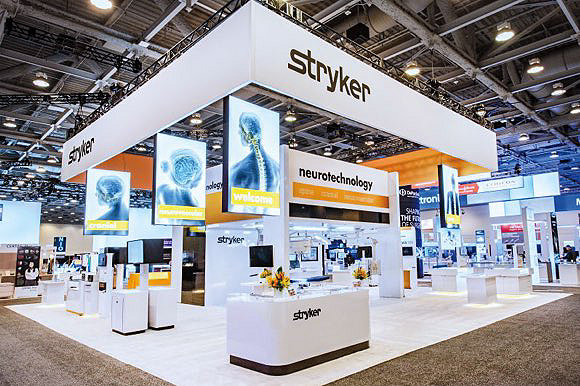
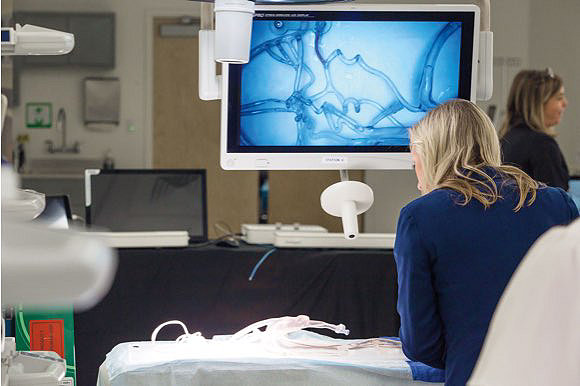
Orthopaedic Instruments and Surgical Technologies
Through Stryker’s Learn Program, operating room professionals have access to industry resources designed to enhance the understanding and use of various medical technologies. With programs based on extensive research findings and practical industry knowledge, we are dedicated to empowering and advancing healthcare providers at every stage of their career.
Trauma & Extremities
TEACH programs (Trauma and Extremities Academic Courses for Healthcare) include training on the effective use of Stryker products in Trauma, Shoulder and Foot and Ankle for the orthopaedic surgeon community, which consists of nurses, residents and fellows, as well as practicing surgeons. TEACH faculty are invited by Stryker to attend a program educating them on Advanced Training Principles to enhance their teaching skills, ultimately contributing to the quality of the TEACH programs. Launched in 2019, the Connect program provides educational resources to residents at teaching institutions and continues as they transition into fellowship and practice. New initiatives such as digital learning platforms and cross-divisional dissection courses were introduced to expand Stryker’s educational resources for residents and fellows at teaching institutions.
Diversity and inclusion: we win together as a team
At Stryker, we win together as a team. Our mission and values unite employees around a diverse and inclusive culture that delivers remarkable results. And we create and invest in programs that foster a positive workplace experience. Here are some of our recent activities and programs:
Annual engagement survey
“We constantly challenge ourselves to achieve more by listening to our employees’ suggestions and taking action to improve our workplace,” says Cindy Carlisle, Vice President, Talent Management and Corporate HR. “For more than 25 years, we’ve used our annual company-wide employee engagement survey to uncover and take action on important issues affecting our work environment.”
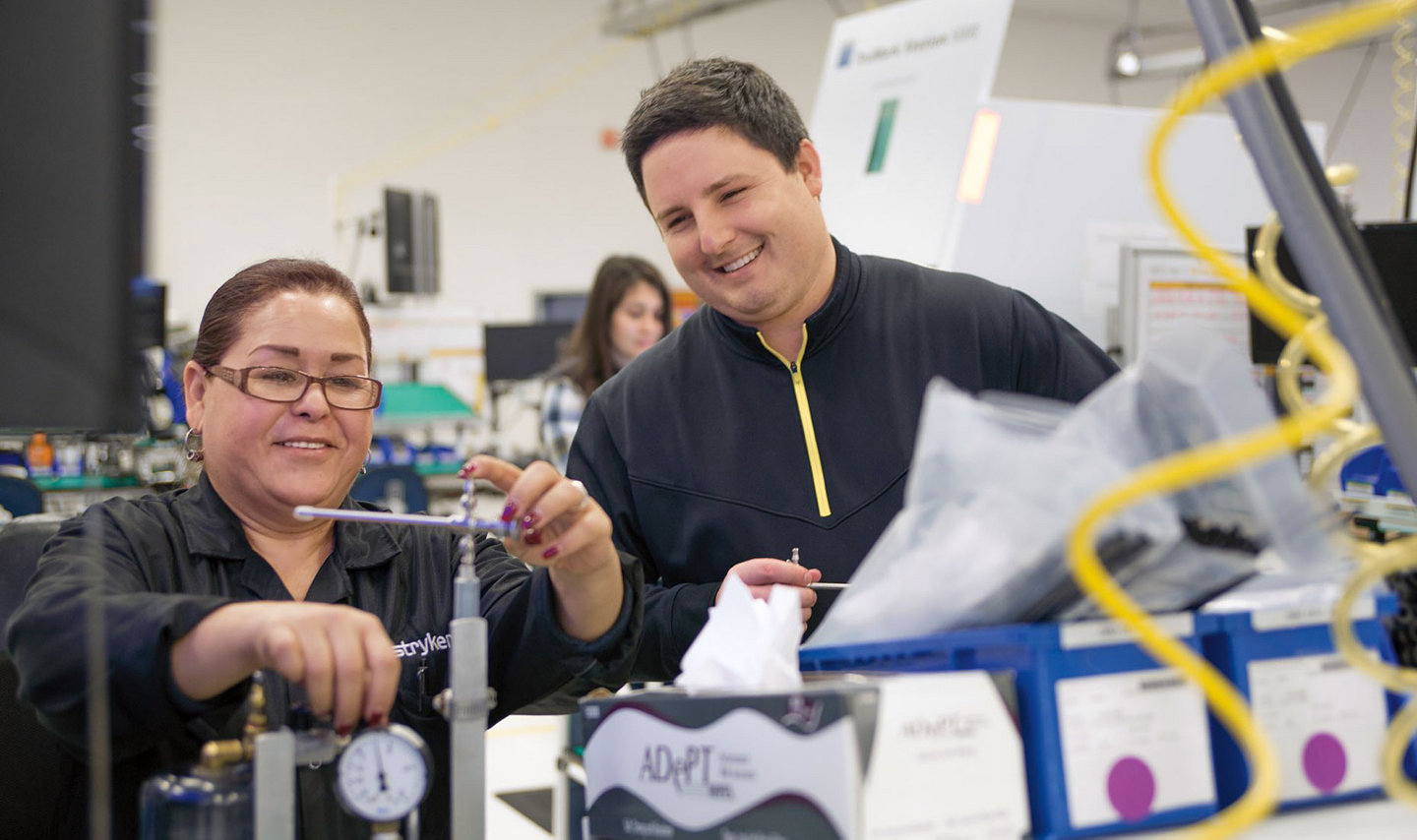
Unconscious bias training
Unconscious biases exist even in the most open-minded people and organizations. We address this proactively through our Think Twice course, a workshop that showcases what bias is, how and where it shows up, and what to do about it. Since launch, more than 4,000 employees across 16 countries have participated in the training, including our CEO and our entire senior leadership team.
Focus groups
To enhance our efforts to build an inclusive, engaging work environment, we partnered with a global management consortium to conduct conversations with employees aimed at expanding existing initiatives. “Attendees provided their insights and pointed out opportunities to increase our diverse talent pipeline,” says Cindy Carlisle. “We used their feedback to develop an actionable set of recommendations to enhance our Diversity and Inclusion strategy.”
Diversity and Inclusion conference
To continue strengthening employee engagement, we host inclusion conferences. Our annual inclusion awareness conference, for example, brings together leaders and employees from our five campuses in Kalamazoo, Michigan. This full-day conference focuses on why inclusion matters and equips participants with tools to build a more inclusive environment.
Disabilities program in Ireland
Patrick O’Brien, an associate at Stryker’s Anngrove facility in Cork, recalled a former co-worker at a previous job who faced some tough employment challenges because he was deaf. So Patrick got involved in developing a Stryker team under the name of ABLE — the Ability and Belief to Leverage Everyone. And over the past two years, the team accomplished a great deal, including:
- Hiring individuals with hearing impairments
- Installing pocket-sized vibrating alarm systems for hearing-impaired people
- Modifying entranceways, desks, coffee stations and dining tables for people in wheelchairs
- Working with the local university on a mentorship program for students with disabilities
FORTUNE Best Workplaces (U.S.)
For Diversity, 2019
#1 out of 100 companies — recipient for the third consecutive year
For Women, 2019
#47 — recipient for the third time
Best Workplaces in Europe
#14
recipient for the first time
Women’s Choice Awards
2020 awards
named to two lists:
100 Best Workplaces for Women
Best Companies for Diversity
Best Workplaces International
#1 for Australia, 2019
recipient for the sixth consecutive year
Mexico, 2019
recipient for the sixth time
Italy, 2019
recipient for the first time
Spain, 2019
recipient for the fourth time
UK, 2019
recipient for the first time
Brazil, 2019
recipient for the sixth consecutive year
Canada, 2019
recipient for the tenth consecutive year
Greater China, 2019
recipient for the third year
France, 2019
recipient for the second consecutive year
Japan, 2019
recipient for the second consecutive year
Korea, 2019
recipient for the second consecutive year
FORTUNE World’s
Best Workplaces
#8 in 2019
out of 25 companies — recipient for the third time
FORTUNE 100 Best Companies to Work For (U.S.)
#8 in 2020
recipient for the tenth
consecutive year
FORTUNE 500
Largest U.S.
Based Companies
#233 in 2019
joined the list in 2003 — recipient
for the 17th consecutive year
FORTUNE World’s
Most Admired
Companies
#5 in 2020
Medical Products and Equipment
recipient for the 18th consecutive year
SYK Corp 2020-02-03

